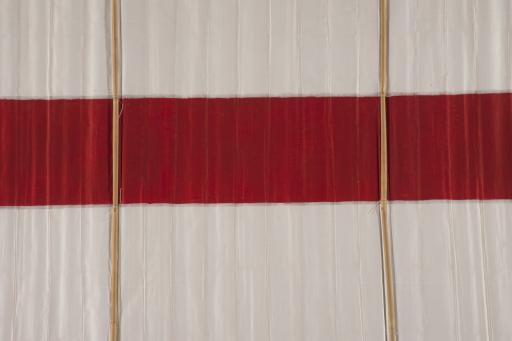Flying Red Line, Tal Streeter
Artwork Overview
Tal Streeter, artist
1934–2014
Flying Red Line,
1972
Where object was made: United States
Material/technique: string; paper; bamboo
Dimensions:
Object Height/Width (Height x Width): 475 x 213 cm
Object Height/Width (Height x Width): 187 x 83 7/8 in
Object Height/Width (Height x Width): 475 x 213 cm
Object Height/Width (Height x Width): 187 x 83 7/8 in
Credit line: Gift of Raymond and Moe Goetz
Accession number: 1998.0002
Not on display
If you wish to reproduce this image, please submit an image request





